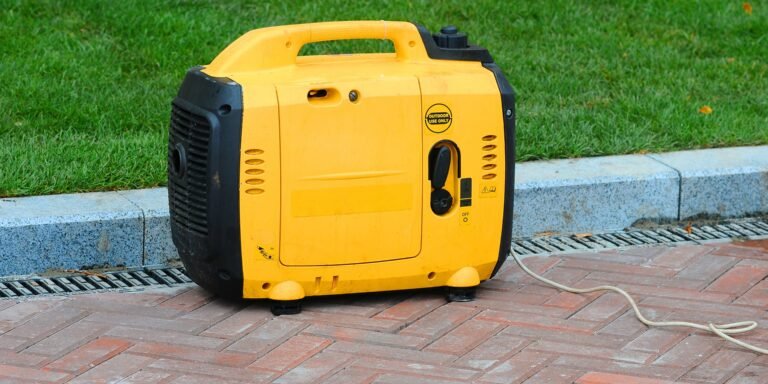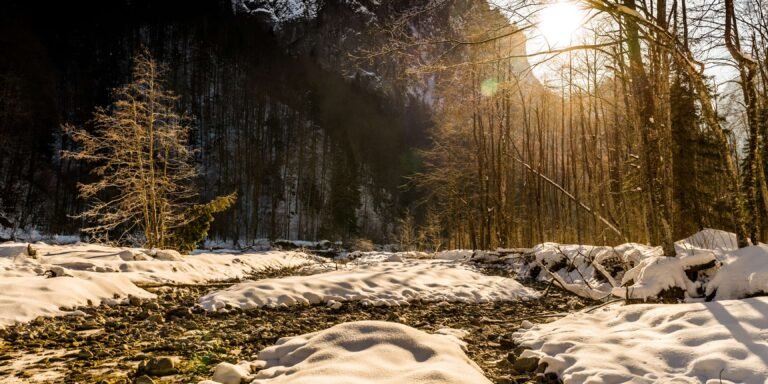How To Cook Food In A Grid Down Survival Situation
This post may contain affiliate links, full disclosure here.
Most of us are aware that when there is a power outage, we should not open the refrigerator or freezer until we are ready to cook. The first thing you should do is cook everything you have in your refrigerator. Consume all of the food before it spoils. After that, prepare food from your freezer. If you read Survival Water, you already have frozen water in your freezer, which will help keep it cooler for longer.
Consider how you’ll cook if you don’t have access to electricity. If you have a gas stove, it is possible that it is still operational. Hopefully, you have an outdoor grill and a couple of 5-gallon gas canisters. Have at least two, and when one runs out, get it refilled right away. You might even have a fire pit outside. For a while, these outdoor cooking methods will suffice. Others in the vicinity are likely to follow suit. It can even appear to be a party.
However, if the electricity is not restored within a week, things will start to deteriorate as people run out of food.
“During a disaster, one of your biggest risks will be your hungry neighbor who knows you have food,” I once read. That statement slammed through me like a tonne of bricks. It first advised me to be cautious about who I notified about my stockpile. Next, think about how you’ll prepare your meal. If your neighbor smells what you’re cooking and is hungry or has hungry children, you may have a problem on your hands. They’ll keep coming back for more if you share. Then there’s the possibility that you won’t be able to feed your own family.
All of this is weighing heavily on my thoughts. Consider this now, before you find yourself in a similar scenario. Decide ahead of time how you’ll manage it, and if you’ll have open discussions with your neighbors about food storage or whether you’d be better off keeping quiet. It’s vital to set the expectation upfront if word gets out that you’re storing food or if you have open dialogues that your storage isn’t for feeding the neighborhood unless that’s your aim.
I won’t be able to cook like I regularly do in the event of a natural disaster, an extended emergency, or the apocalypse.
While this is terrible, it does not have to be the end of a fantastic supper.
You can make a delicious supper even if you don’t have a sophisticated gas stove, electric oven, propane grill, food dehydrator, or microwave.
Survival cooking, in fact, is a skill that may transform a dreadful scenario into a pleasurable dinner. It is for this reason why survival cooking is so crucial.
Your household will be eating fresh hot meals while everyone else is eating expired canned items.
See also: Top 20 Barter Items to Stockpile
Cooking Indoors During An Emergency
One of the best things about survival cooking is that it doesn’t require a lot of precision. It’s a sloppy science, one that you may learn via trial and error.
You won’t even have the option of gourmet in an emergency. You’ll most likely be working with a limited number of ingredients and will be too hungry to notice.
This isn’t rocket science – more like simple chemistry – yet hunter-gatherers refined these techniques a long time ago, and if they could do it, so should you…
Aren’t you smarter than a caveman?
So let’s start with the most basic survival cooking techniques. Then we’ll look at a few new survival cooking devices to aid in your emergency meal preparation.
In the garage, a two-burner propane camping stove might be utilized. It’s not the ideal choice for indoor cooking, but if it’s necessary, I’d place it near a window or crack a door for airflow. There is also a one-burner stove available.
I had a Single Burner Folding Stove with plenty of cooking fuel before purchasing the items below. Again, make sure you have adequate ventilation.
Another option is to use a Butane Gas Stove. For ventilation, use the same steps as before. Also, make sure you have enough fuel.
All of the products listed above require some form of fuel, which must be acquired ahead of time. My concern is that the power loss could last far longer than most people expect, especially if the grid is down. So when I heard about the BioLite CampStove, I was ecstatic. We tested ours in the garage and found it to be feasible. This stove is unique in that it burns little twigs, grasses, leaves, and other small items found on the ground. In the garage, I store a container of similar items. It even comes with a USB charger for charging accessories. From extended cross-country trips to a day of off-roading, the BioLite CampStove is always with us. This is something I strongly suggest. It’s something I’d never travel without!
Another option that burns twigs and leaves is the Camping Stove, Wood Stove/Backpacking Stove, Portable Stainless Steel Wood Burning Stove, which a buddy purchased. She says it’s fine, but not for the long haul.
If you have a dutch oven, don’t dismiss it as a cooking option. Briquettes are in high demand right now. Costco provides a double bag for a reasonable price during the summer, but get them quickly. They’ll be putting out Halloween decorations and packing away summer items before we realize it.
Print the recipes you’re interested in from the links below and start stocking up on ingredients right away.
A Dakota Fire Hole is an underground fire pit that can be used for heat, stealth camping, and severe winds.
A Note on Creative Survival Cooking
There is a larger lesson to be learned from all of this. It’s more than just a set of basic survival cooking skills.
It’s about being prepared, adjusting, and conquering obstacles.
Making today’s investments in the proper tools can help you prepare for tomorrow.
Adapting to the circumstances in which you find yourself.
Surviving by overcoming hurdles.
Making the most of your situation and ensuring your survival by utilizing each resource accessible to you. Improvisation is a life skill that can be used in any scenario, not only when you’re hungry.
It’s like the show Iron Chef, where the chefs don’t know what major elements they’ll be working with until the game starts. Then they must do everything in their power to provide the nicest supper possible.
You won’t know what resources and materials you’ll have on hand in most survival situations. You’ll most likely have to make due with whatever is available.
It’s critical to be able to accomplish this well, as it opens up a world of possibilities. With a little creative survival thinking, you can construct a kitchen out of an empty meadow. You will go far if you can apply this to all situations.
Frequently Asked Questions About Survival Cooking
In a survival emergency, what is the best way to prepare food?
There are many different cooking techniques to select from, and you can pick the one that appeals to you the most. Take a look at the DIY alternatives we discuss in the post. Make sure to test the stone oven, which aids in the preparation of even pizza.
Is it true that cooking is a survival skill?
Sure. Cooking is necessary for survival. Restaurants and stores may close, and ready-to-eat food will be unavailable. Sharpen your abilities and prepare meals with items you’ve found in the wild or procured yourself.
How will I be able to prepare food without the use of electricity or fire?
The lack of electricity is not a barrier to learning to cook. You have a variety of options to choose from. The lack of fire, on the other hand, is somewhat restrictive. Sun ovens are one option. As a result, we advise you to learn to regulate fire in order to secure your future. On our website, you’ll find important information.
What was the earliest way of cooking?
In the preceding post, you will find numerous rudimentary culinary routines. Someday, you should give earth stoves a try. This solution has always been popular in a variety of cultures.
Bottom Line On Cooking In A Survival Situation
Preparation is the most important factor in ensuring one’s survival. Staying alive necessitates the consumption of food. As a result, make sure you’re prepared to handle your own food in an emergency.
You can’t count on supermarkets and restaurants to be open during a disaster. Instead, you gain a deeper understanding of the fundamental concepts of survival cookery and food storage (such as how to make pemmican).
So, by practicing what you’ve learned today, you’ll be able to recall what you’ve learned.
Even if you buy a camp stove, you should practice all of the survival cooking techniques. Even the most reliable camp stoves aren’t always reliable.
You never know when you’ll need a makeshift survival kitchen. And it’s possible that your abilities and expertise will be pushed to the ultimate test.
Which of these cooking methods do you intend to use in the event of a disaster? In the comments section below, we’d like to hear from you.







